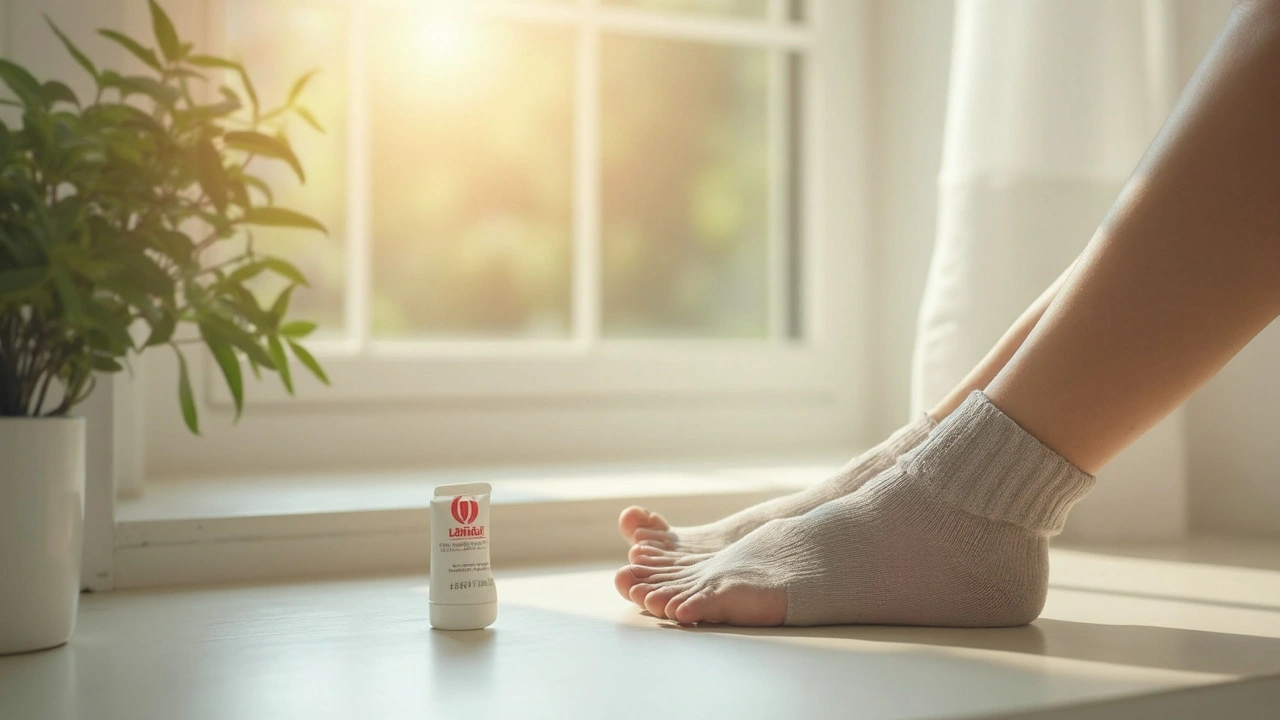Athlete's foot: what it looks like and how to stop it
Got itchy, scaly skin between your toes or red patches on the soles? That’s usually athlete's foot (tinea pedis) — a common fungal infection that loves warm, sweaty places. It’s annoying, but most cases clear with the right steps. Read on for quick fixes, what to avoid, and simple prevention moves you can start today.
Quick treatment options
Start with an over-the-counter antifungal cream or spray. Look for active ingredients such as terbinafine (often sold as Lamisil), clotrimazole, miconazole, or tolnaftate. Apply the product to clean, dry skin once or twice daily and keep using it for the full course the package recommends — even after symptoms fade.
If the rash is stubborn, spreading to nails, or very painful, see a doctor. They may prescribe a stronger topical or an oral antifungal. Oral terbinafine or itraconazole work for nail or severe infections, but these need medical monitoring because of possible side effects.
Important warning: don’t reach for steroid creams unless a doctor tells you to. Steroids (for example, creams like Betnovate) can reduce inflammation but often mask or worsen fungal infections, making them harder to treat.
Practical prevention tips
Keep your feet dry. Fungi thrive in moisture, so dry thoroughly between toes after bathing. Use a separate towel for your feet. Wear breathable shoes and rotate pairs so each pair gets a day to air out.
Socks matter. Choose moisture-wicking socks (polyester blends or wool) and change them if your feet get sweaty. Wash socks in hot water when possible and don’t wear the same pair two days in a row.
Protect your feet in public places. Wear flip-flops or shower shoes in gyms, pools, and locker rooms. Use an antifungal spray or powder in shoes if you get recurring infections.
Avoid sharing shoes, socks, or towels. Fungal spores spread easily on fabrics. Clean shower floors and mats regularly with household cleaners or a bleach solution if mildew shows up.
Watch the nails. If toenails thicken, discolor, or lift, that may be fungal nail infection. Topical creams rarely fix nails; a doctor can advise on nail-specific treatments or nail removal in severe cases.
If you have diabetes, poor circulation, or a weakened immune system, treat any foot issue quickly and see your healthcare provider early. Complications can be more serious for people with these conditions.
Small habits prevent repeat infections: dry feet well, wear the right socks, air out shoes, and treat the first sign of redness or itching. Most cases respond to simple OTC antifungals if you stick with the treatment. When in doubt, get a quick check from your doctor — it’s faster than dealing with a long-running foot problem later.

